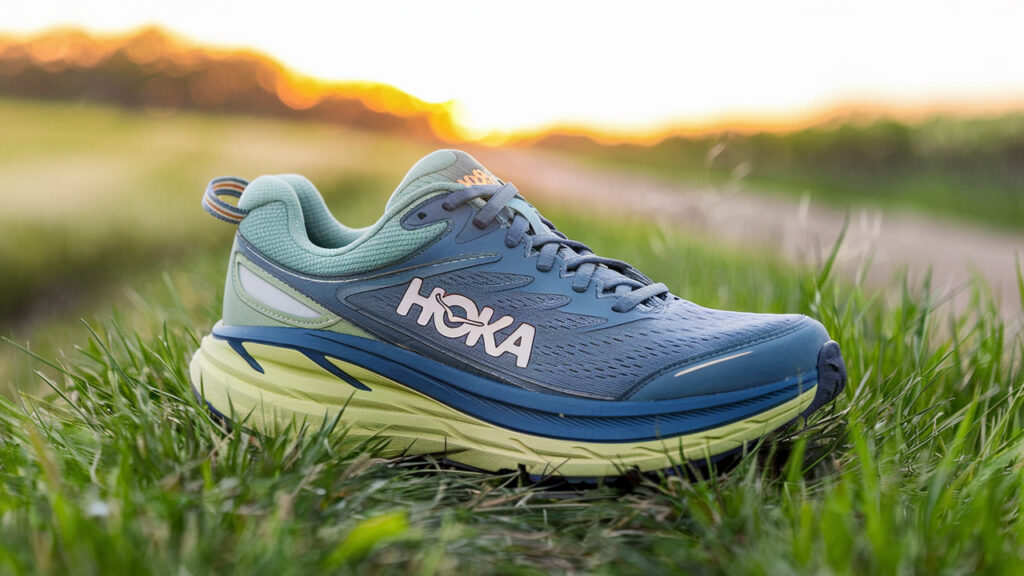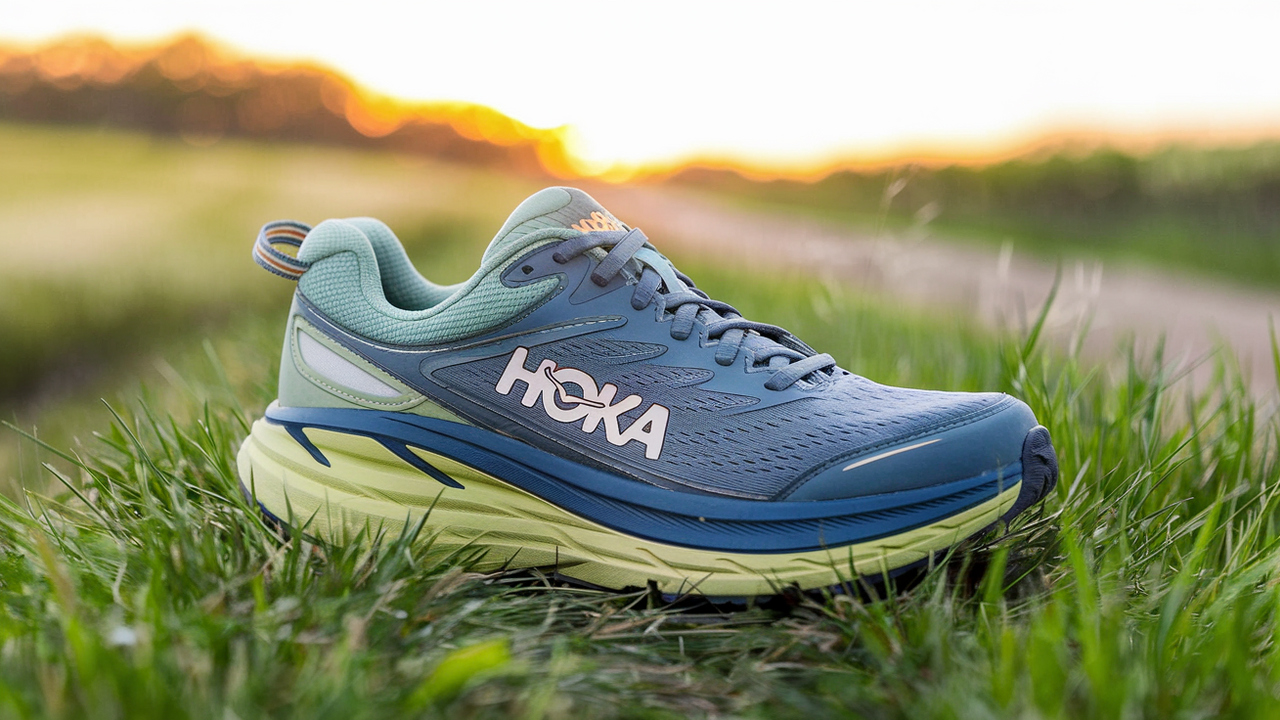Best Hoka Shoes for Recovery Days and Easy Runs
Not every day is meant for pushing limits. Some days, your body needs to slow down, recover, and reset. That’s where the right pair of recovery running shoes can make a real difference — and few brands do it better than Hoka.
If you’re looking for the best Hoka shoes for recovery days and easy runs, this guide is built to help you choose models that are soft, supportive, and designed to reduce impact while promoting smooth strides. These aren’t racing shoes — they’re comfort-focused tools built to help you bounce back stronger.

Table of Contents
What Makes a Great Recovery Shoe?
The ideal recovery shoe does three things:
- Reduces strain on your joints
- Maximizes cushioning without feeling sluggish
- Helps your body heal while keeping you moving
After testing several Hoka models and checking hundreds of runner reviews, I’ve narrowed it down to the top picks that deliver exactly that.
Browse top Hoka recovery shoes on Amazon
Hoka Bondi 8 – The Ultimate Recovery Cushion
If I had to pick one Hoka model for recovery days, it’s the Bondi 8. It’s Hoka’s most cushioned road shoe and is designed for softness above all else. Whether you’re walking the dog, jogging a few miles, or recovering after a race, the Bondi 8 gives your legs a well-deserved break.
Why it works:
- Full-length EVA midsole
- Rocker sole for smooth transitions
- Plush feel with plenty of impact protection
Hoka Clifton 9 – Soft and Versatile for Easy Runs
When you still want to log miles but keep the effort light, the Clifton 9 is your go-to. It’s lighter than the Bondi, but still features the signature Hoka cushioning. I use it on easy jogs, short recovery runs, or those days when I’m not chasing speed — just movement.
Best for:
- Runners who want a lightweight recovery option
- People looking for one shoe that does a bit of everything
- Short to mid-distance, low-effort runs
Explore Clifton 9 styles and deals on Amazon
Hoka Arahi 6 – Recovery Support with Stability
If you need more structure during recovery (especially if you overpronate), go for the Arahi 6. It includes J-Frame stability technology, offering guidance without making the ride feel stiff. It’s a great choice if your easy days still require some extra alignment support.
Highlights:
- Lightweight stability
- Firm arch structure for overpronators
- Cushioned but controlled ride
See Hoka Arahi 6 options on Amazon
Hoka Gaviota 5 – Plush Stability for Recovery Walkers
Not everyone recovers with runs — some recover with long walks. If that’s you and you need max stability, the Gaviota 5 is one of the most supportive Hoka shoes available. It’s great for injury recovery, walking post-race, or reducing foot fatigue.
Perfect for:
- Heavier runners
- Post-surgery or injury recovery
- Recovery walking days
Why I Always Rotate Recovery Shoes
Even though I love fast shoes, I’ve learned that rotating a soft, recovery-friendly shoe into my week has helped me stay injury-free. On days when I feel heavy-legged or mentally drained, slipping into my Bondis or Cliftons lets me keep moving without pushing too hard.
Recovery shoes help extend your weekly mileage and protect your body long-term.
Ideal Use Cases for Hoka Recovery Shoes
Here’s when I personally use my recovery Hokas:
- The day after long runs or hard intervals
- Easy Sunday walks or jogs
- Travel days when I’m on my feet a lot
- Post-race cool-downs
- Cross-training days with light activity
Soft vs. Stable: Which Is Right for You?
If you want pure softness, go with:
- Bondi 8
- Clifton 9
If you want support plus cushion, choose:
- Arahi 6
- Gaviota 5
You can’t go wrong — just match it to your foot type and recovery plan.
Recovery Is Where Growth Happens
Don’t skip your recovery shoes — they’re just as essential as your race-day trainers. With the right pair of Hokas, your easy days will feel smoother, your joints will thank you, and you’ll recover faster for your next big session.
View all Hoka shoes perfect for recovery on Amazon
What Makes Recovery Shoes Different from Daily Trainers?
Daily trainers are built for versatility, but recovery shoes lean into one specific purpose: minimizing impact. When you’ve already put stress on your legs from tough workouts, a proper recovery shoe should ease that stress, not add to it. That’s why Hoka’s max-cushioned options are so ideal — they absorb shock and help your body rebuild without excess strain.
Can Recovery Shoes Help Prevent Injuries?
Absolutely. One of the main causes of injury is overtraining in aggressive shoes. When you alternate your weekly routine with softer shoes like the Bondi 8 or Clifton 9, you give your ligaments and joints a break. It’s like putting suspension on your feet — you’re still moving, but everything feels lighter and safer.
Browse top injury-preventive Hoka shoes on Amazon
The Role of Rocker Soles in Recovery
One unique feature in most Hoka shoes is the Meta-Rocker sole, which encourages a smooth heel-to-toe transition. This natural rolling motion reduces muscular effort and helps you stay efficient even on tired legs. On recovery days, this is a big win — your stride stays consistent without overworking the calves or Achilles.
Who Should Wear Recovery Running Shoes?
Recovery shoes aren’t just for elite runners. They’re great for:
- Beginner runners adjusting to weekly mileage
- Older runners who need joint protection
- Injury-prone athletes
- Anyone adding walking, jogging, or cross-training to their routine
Even if you’re only logging 10–15 miles per week, having a recovery shoe in your rotation will help you feel fresher and more motivated.
Hoka Shoes for Walking Recovery
Let’s be clear — recovery doesn’t always mean running. Sometimes the best thing you can do is take a long walk in a high-cushion shoe. I use the Bondi 8 when I’m walking the dog or doing errands after a heavy training day. It gives me the support I need without pushing me too far.
Check Bondi 8 for recovery walking
What About Recovery After Races?
After finishing a race — especially a half marathon or longer — I always switch out of my race shoes and into something soft and neutral like the Clifton 9. It’s lighter than the Bondi, still responsive, and helps me cool down without feeling beat up. Trust me, your legs will thank you.
How Long Do Hoka Recovery Shoes Last?
Most recovery-oriented Hokas will last 400–500 miles, but because they’re often used on easier days, they tend to wear down slower than speed trainers. The foam stays plush longer, and the soles show less wear when not used for aggressive workouts.
To maximize their lifespan:
- Rotate them with your other running shoes
- Use them mostly for low-impact sessions
- Keep them clean and dry after use
Recovery Shoes for Runners with Flat Feet
If you have flat feet or collapse inward during your stride, recovery becomes even more important. The Hoka Gaviota 5 is specifically designed for this — it offers a stabilizing midsole that supports your arch without feeling bulky. It’s one of the best shoes I’ve found for both walking and slow runs with flat feet.
See Gaviota 5 reviews on Amazon
Recovery and Mental Refresh
Let’s not forget the mental side of running. When your body is tired, your mind often follows. Having a shoe like the Clifton or Bondi that feels effortless helps you stay connected to the sport without dreading every step. It’s easier to build long-term consistency when your easy days actually feel easy.
Should Beginners Use Recovery Shoes from the Start?
Yes — especially if you’re dealing with weight-bearing stress, sore feet, or inconsistent form. Beginners often lack the muscle strength and foot mechanics that experienced runners develop. Using a recovery-style shoe like the Clifton 9 gives you protection while your body adapts to regular training.
Explore beginner-friendly Hoka options
Hoka Recovery Shoes vs Max Cushion Shoes: Are They the Same?
They overlap, but not all max cushion shoes are ideal for recovery. The key is in the ride feel — recovery shoes need to be forgiving but not sluggish. Models like the Bondi 8 manage this perfectly by combining plush foam with a responsive rocker. That means you get softness and flow in every step.
Choose Recovery Shoes Based on Feel, Not Speed
Recovery shoes shouldn’t make you feel fast — they should make you feel safe, light, and refreshed. If you can walk or jog for 45–60 minutes in a pair and forget about your feet the entire time, you’ve found the right match. Hokas deliver that experience with every step.

